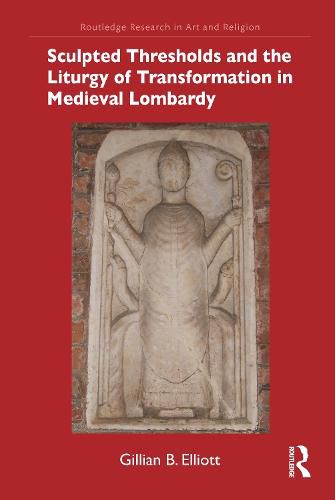Readings Newsletter
Become a Readings Member to make your shopping experience even easier.
Sign in or sign up for free!
You’re not far away from qualifying for FREE standard shipping within Australia
You’ve qualified for FREE standard shipping within Australia
The cart is loading…






This book explores the issue of ecclesiastical authority in Romanesque sculpture on the portals and other sculpted gateways of churches in the north Italian region of Lombardy.
Gillian B. Elliott examines the liturgical connection between the ciborium over the altar (the most sacred threshold inside the church), and the sculpted portals that appeared on church exteriors in medieval Lombardy. In cities such as Milan, Civate, Como, and Pavia, the liturgy of Saint Ambrose was practiced as an alternative to the Roman liturgy and the churches were constructed to respond to the needs of Ambrosian liturgy. Not only do the Romanesque churches in these places correspond stylistically and iconographically, but they were also linked politically in an era of intense struggle for ultimate regional authority. The book considers liturgical and artistic links between interior church furnishings and exterior church sculptural programs, and also applies new spatial methodologies to the interior and exterior of churches in Lombardy.
The book will be of interest to scholars working in art history, medieval studies, architectural history, and religious studies.
$9.00 standard shipping within Australia
FREE standard shipping within Australia for orders over $100.00
Express & International shipping calculated at checkout
This book explores the issue of ecclesiastical authority in Romanesque sculpture on the portals and other sculpted gateways of churches in the north Italian region of Lombardy.
Gillian B. Elliott examines the liturgical connection between the ciborium over the altar (the most sacred threshold inside the church), and the sculpted portals that appeared on church exteriors in medieval Lombardy. In cities such as Milan, Civate, Como, and Pavia, the liturgy of Saint Ambrose was practiced as an alternative to the Roman liturgy and the churches were constructed to respond to the needs of Ambrosian liturgy. Not only do the Romanesque churches in these places correspond stylistically and iconographically, but they were also linked politically in an era of intense struggle for ultimate regional authority. The book considers liturgical and artistic links between interior church furnishings and exterior church sculptural programs, and also applies new spatial methodologies to the interior and exterior of churches in Lombardy.
The book will be of interest to scholars working in art history, medieval studies, architectural history, and religious studies.